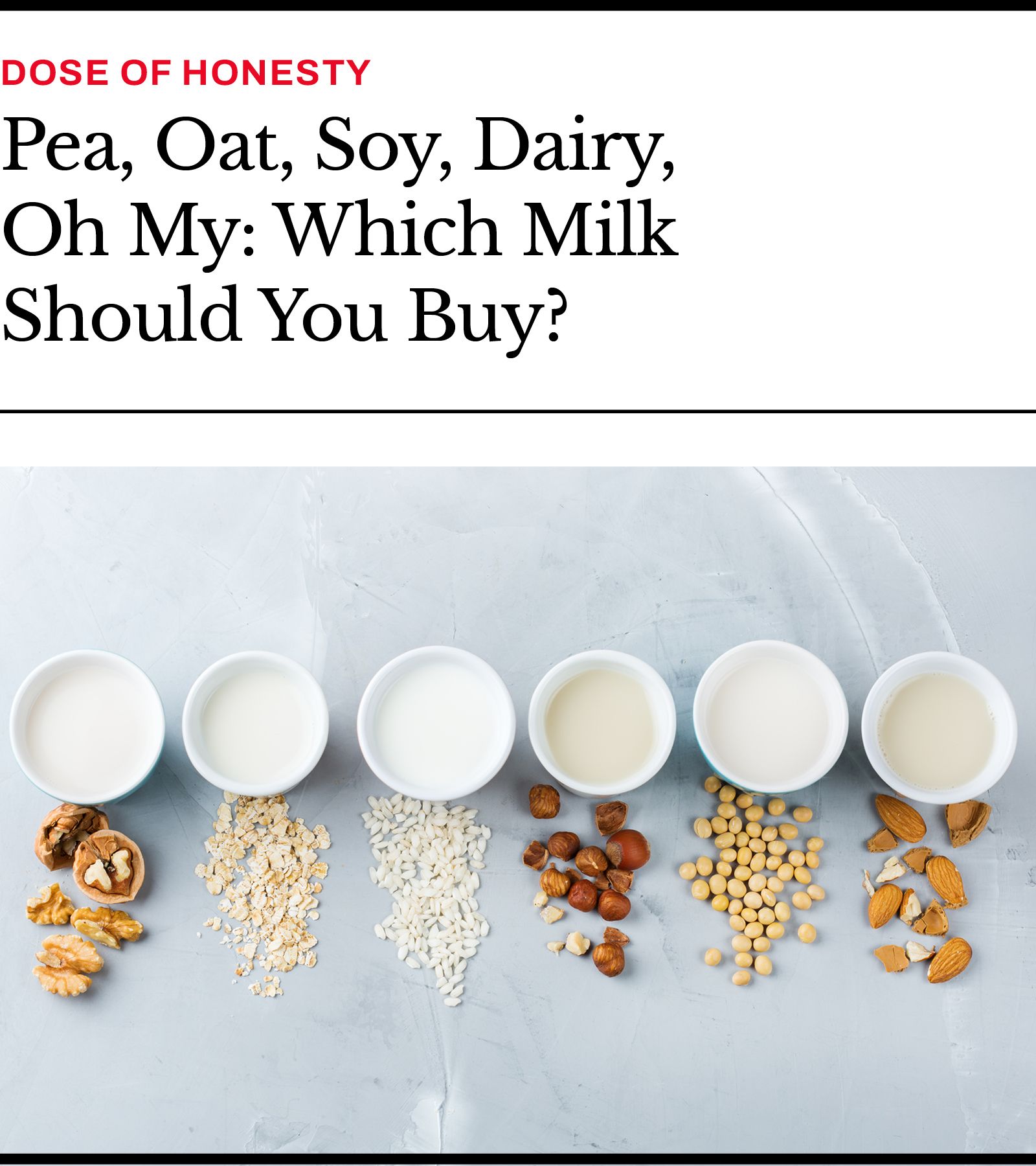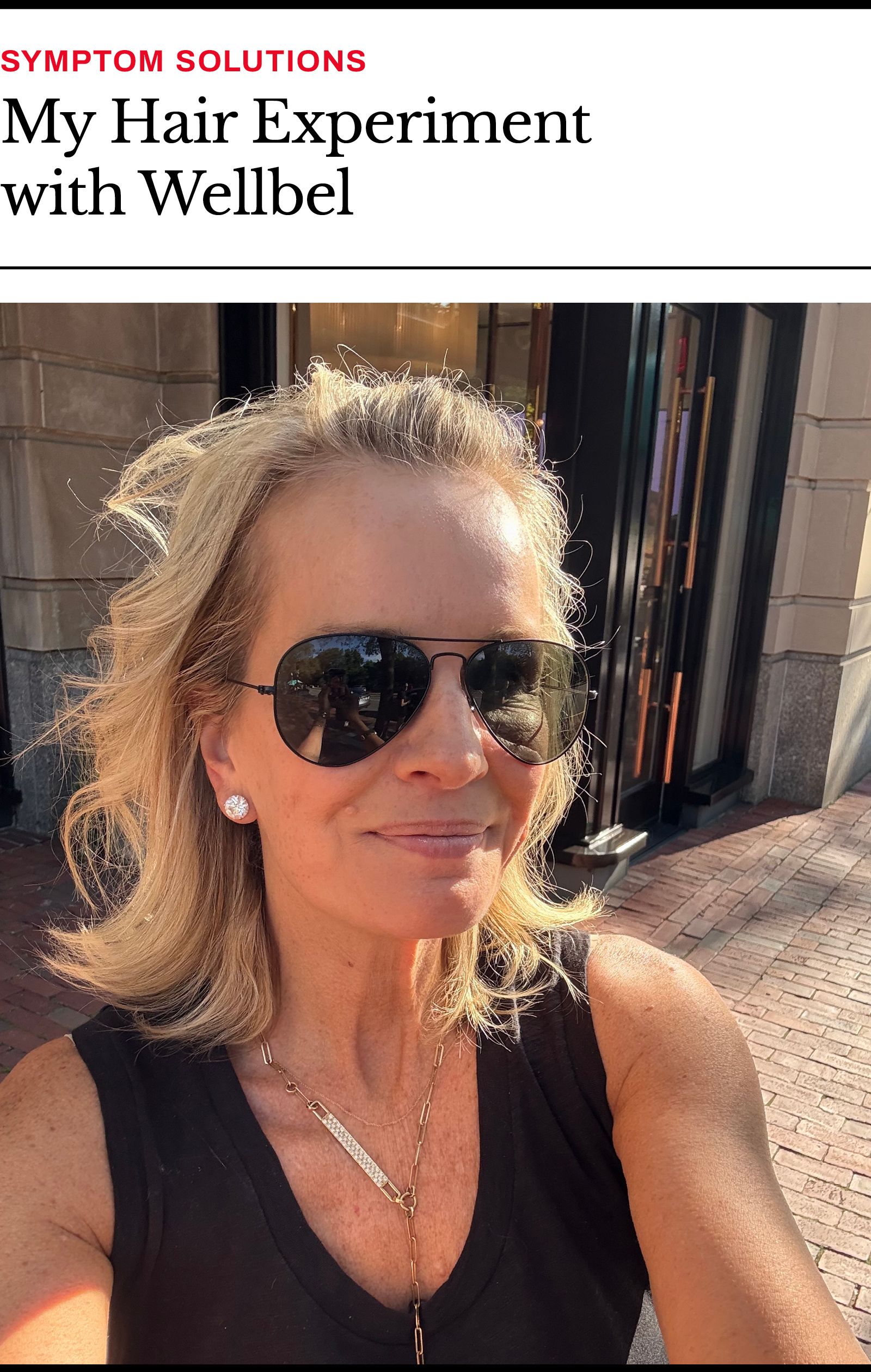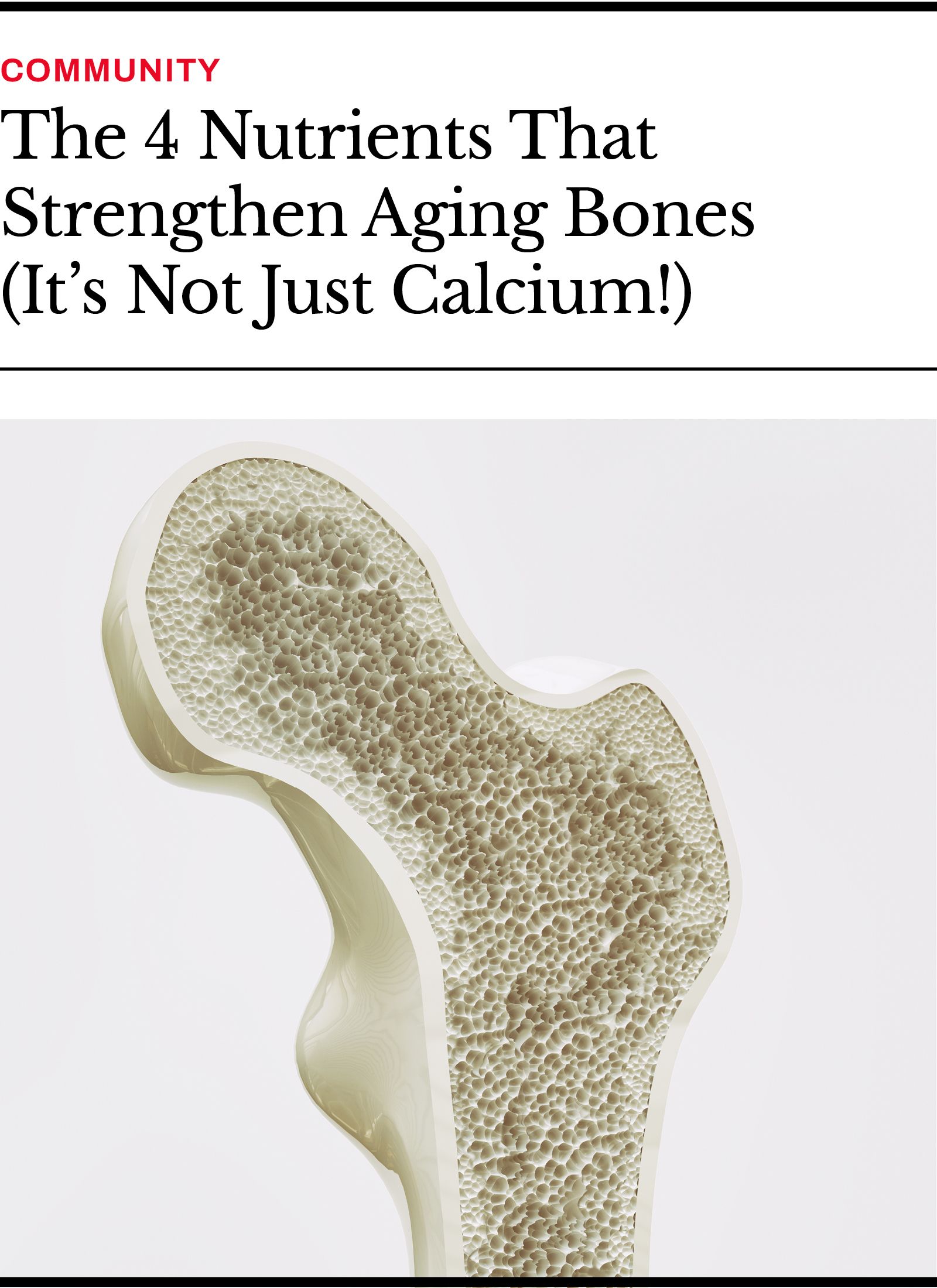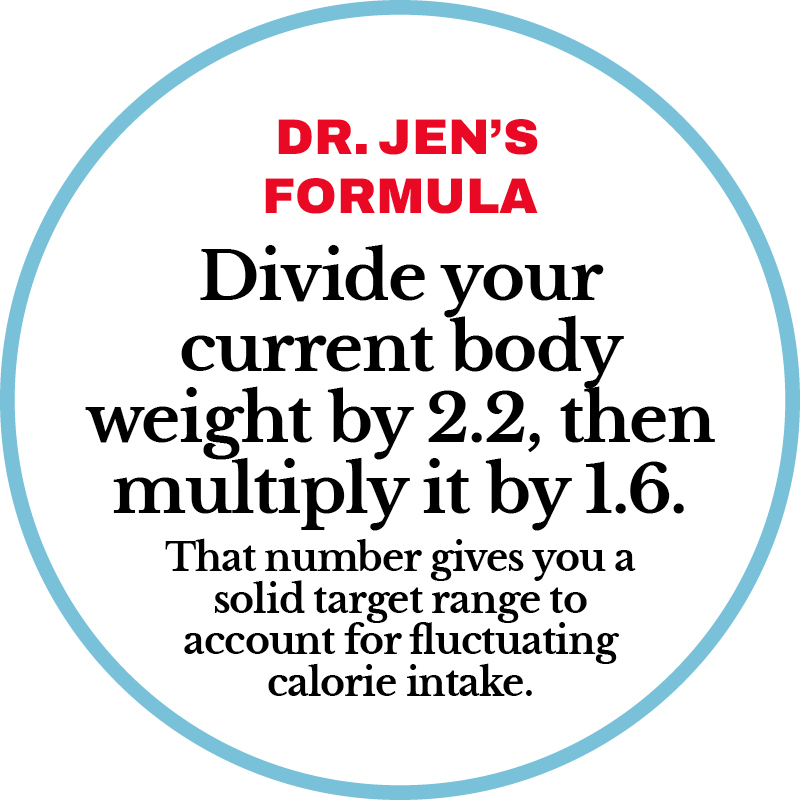- Today's Ajenda
- Posts
- TODAY'S AJENDA #81
TODAY'S AJENDA #81
Welcome to TODAY'S AJENDA!



Every day, it feels like a new milk hits the market. What started as dairy and 2% has evolved into soy, oat, almond, hemp, pea, and—wait for it—microbe milk. (Yes, it's real. No, I don’t fully understand it either.)
But is any one of them actually better?
And are they worth the up-charge at your coffee shop?
As a nutritionist, let me explain to you exactly what you need to know about each type so you know which one to pour. 🥛
Cow’s Milk: The Original
Cow’s milk is the gold standard for protein, with about 8 grams per cup. It’s also brimming with calcium, potassium, and B vitamins.
Science Says: A meta-analysis with 618 people found that dairy milk improved bone mineral density in healthy postmenopausal women.
But cow’s milk isn’t for everyone. Around 65% of people worldwide are lactose intolerant, and others avoid it because it’s higher in sugar (12 grams per cup), saturated fat, hormones, or antibiotic residues.
That said, much of the negative press is overblown. The American Heart Association shows that moderate consumption of dairy fits within a heart-healthy diet.
Soy Milk: The Closest Plant Rival (& The One I Choose)
If you’re going plant-based, soy milk is your best bet for protein (it has 7 grams per cup). It also contains isoflavones, plant compounds that mimic estrogen and may help with bone and heart health after menopause. This is my go-to because of the high protein, beneficial compounds and also because I am allergic to nuts to many of the others are off-limits for me.
Bonus: Most soy milks are fortified with calcium and vitamin D.
The cons. Soy is one of the “Big 8” most common food allergens, and it can be processed with additives, thickeners, and sugars. It could also interfere with thyroid production, particularly in people with an iodine deficiency.
Almond Milk: Low Calorie, Low Protein
While almond milk has barely any protein (1 gram per cup), it compensates by being incredibly low-calorie, with just 30-60 per cup unsweetened.
It’s also a solid keto option with 1-2 grams of carbs and even contains a bit of monounsaturated fats (“good” fats that reduce “bad” cholesterol).
Think of almond milk as more of a low-calorie option than a nutritional powerhouse. We also can’t forget that almond farming is notoriously water-intensive.
Oat Milk: Creamy but Sugary
The natural starch in oats gives it a frothy, creamy texture without needing extra additives, and it contains beta-glucan (a soluble fiber that may lower cholesterol levels).
The downsides? It’s low in protein (2-3 grams per cup) but high in carbs (15-20 grams per cup) and calories (120 per cup).
Zoom In: When processed, oat milk contains maltose, a natural sugar that has a higher glycemic index. However, it’s far from the “super sugar” that the internet would have you believe.
Pea Protein Milk: The New Contender
The “p” in “pea milk” might as well stand for “protein.” Each glass has up to 8 grams of protein, and it contains all nine essential amino acids (which is rare for plant-based options). 🫛
It’s also low in sugar at just 1-2 grams per cup (unsweetened). However, since pea milk is newer to the market, it’s pricier and harder to find. Also, the “earthy” taste isn’t for everyone.
Hemp Milk: A Quiet Player
Hemp milk comes from hemp seeds. (Yes, the cannabis plant. No, you won’t get high.) What it does offer is omega-3 ALA and iron, which may support heart health and energy levels.
Nutrition Label: Hemp milk has about 60 calories per cup, 3 grams of protein, and no sugar.
However, hemp milk is low in calcium, vitamin D, and B12, so it may require fortification. Without it, it’s nutritionally incomplete.
So, Which Is Healthiest?
There’s no one “healthiest” milk. Go for the milk that fits your goals, digestion, and palette!
If bone health is a priority, low-fat cow’s milk, soy milk, and pea milk are your best bets. They deliver the most protein, which your bones need alongside calcium.
If low calories are your focus, almond works (unless you have a nut allergy like me).
If taste is your thing, there’s nothing wrong with oat milk in moderation. Just make sure to watch for added sugars and get your protein elsewhere.
Remember, though, that milk is just one part of your bone-building toolkit. More on that below!

For the last five years, I’ve really been going through it when it comes to my hair situation.
The culmination of menopause, not getting enough protein in the past, 20 years of professional hair styling for Good Morning America (read: alcohol-based styling products, pulling, heat, studio lights, etc), and having Covid twice led to dry, thinned hair that became the bane of my existence.

Starting My Hair Experiment
Enter: Wellbel.*
Six weeks ago, I met the co-founder of this five-year-old hair wellness company, Dr. Daniel Yadegar (Dr. Dan for short!). He’s a Harvard-trained Physician Cardiologist and Internist with advanced fellowships in integrative and functional medicine with a focus on longevity.
I then decided to run my own hair experiment after reviewing Wellbel’s clinically studied ingredients and real-person reviews.
It was mid-summer, and my hair was (again!) in critical condition. It was dry, thin, dull, and falling out due to my high mercury level (which I have since lowered!). I was pretty desperate and figured I had nothing to lose by trying Wellbel in earnest. (Note: I’ve been notoriously non-compliant with taking hair supplements in the past, but this time I was determined to do a proper, robust self-experiment.)
I began using their shampoo and conditioner and taking their Women+ supplement religiously, which is formulated specifically for perimenopausal and menopausal women. I was prepared for the long haul, as it usually takes at least three months before you see any noticeable differences.
Here’s the mini-med school on why patience is key for hair growth:
Hair Growth Med School
Hair follicles go through three main stages in their life cycle:
Phase 1) Anagen
This is the growth phase. It lasts anywhere from two to seven years, depending on genetics and hormones.
During this time, the cells in the root of the hair are dividing rapidly, pushing the strand up and out of the scalp. About 85–90% of the hair on your head is in this active growth phase right now.
Phase 2) Catagen
Catagen is the transition phase. It lasts about two weeks. During this chapter, your hair follicles shrink, your hair growth slows, and the hair separates from the blood supply.
Only 1% to 3% of the hairs on your head are in this phase right now.
Phase 3) Telogen
Telogen is the resting phase. This lasts around 3-4 months. The old hair stays in place until a new one grows beneath it. Eventually, the old hair sheds naturally, and the cycle begins anew.
In short: grow, rest, shed, repeat. It’s a natural rhythm, unless something disrupts it, like stress, hormones, or illness. Then, more follicles shift into telogen prematurely, which is why you notice shedding.
Understanding these phases also explains why and how it takes so long to see any change in hair, once an intervention is started.
The Results
After four weeks, I thought I saw a big change. But I knew for sure at the six-week mark.
My hair was fuller, shinier, bouncier…and others were noticing. That’s when my 25-year-old daughter also started taking Wellbel, and just like me, she saw improvements after one month, which is earlier than I would expect, but still within the range of possibility based on the life cycle of the hair follicle that we discussed above.)
Now, as we say in medicine and science, an “n of 2” (results based on two people) doesn’t make a conclusive study. But for us? The results have been conclusive. I can’t wait to see how my hair is after three more months on Wellbel!
While I’ll continue to do nightly scalp massage, and rest my hair as much as possible (by leaning on my faux-po when I don’t want to wash or style my hair), so far I’ve found great results with Wellbel, and I believe in their formulations.
Dr. Dan and I actually did a live Q&A Zoom with us in The Wellness Experiment, where he answered everyone’s questions on hair growth, thinning, and how to build a results-driven hair wellness routine.
My experiment will continue, and I will definitely report back in another two months! Hopefully by then, I will look like Simba!
Wellbel has been kind enough to extend a 15% discount to all Ajenda readers. Use the code Ajenda15 for 15% off any Wellbel order with free shipping. And if you decide to do a quarterly subscription, you’ll get another 20% off.

When it comes to strong bones, most of us immediately think of calcium. (Who can forget those “Got Milk?” ads?) But calcium is just one piece of the bone-building puzzle.
Three other nutrients support bone health, and together, they can prevent osteoporosis: the condition that turns bones brittle and breakable. Here’s your guide to all four:
1. Calcium (The Building Block)
Calcium is the most abundant mineral in your skeleton. Women over 50 need about 1,200 mg per day to maintain bone density.
Zoom In: When you don’t eat enough calcium, your body pulls it directly from your bones to keep your blood calcium levels stable. Over time, this weakens the bones.
Luckily, calcium shows up in plenty of foods (and not just dairy):
A cup of milk (any fat percentage) is about 300 mg
A cup of cooked collard greens is around 260 mg
A cup of Greek yogurt (plain nonfat) is 250
Canned salmon with bones (3 oz) is 180 mg
Chia seeds (1 oz) are 180 mg
Maybe you’re thinking: “That’s a lot of food to hit 1,200 mg,” and are tempted to get calcium supplements.
But for over 10 years, research has shown that calcium supplements don’t reduce or prevent bone fractures. In fact, it’s associated with an increased risk of coronary events in post-menopausal women!
The Theory: When you eat calcium-rich foods, the food matrix (the vitamins and compounds in whole foods) helps that calcium go to the bones. But isolated calcium from supplements doesn’t have that support system, so it travels to the arteries of the heart instead and lands on plaques.
This means taking a calcium pill will not help and may hurt. It’s best to get calcium from real food.
2. Vitamin D (The Gatekeeper)
Calcium can’t be absorbed without vitamin D. But after menopause, we’re more prone to deficiency because our skin produces less of it (and our kidneys don’t activate it as well).
Zoom In: Beyond menopause, other factors increase your risk: obesity, darker skin, limited sun exposure, and age.
The recommended daily allowance is about 600 IU for those aged 1-70 (and 800 IU for those older than 70). Food sources include:
Egg yolks (40 IU each)
Salmon (~450 IU per 3 oz serving)
Dairy or plant milks (around 100 IU per cup)
But diet alone often falls short, and many women need supplements. The good news? Vitamin D3 supplements are safe and effective.
Doctor’s Note: I personally take 1,000 IU daily to keep my levels around 40-50 ng/mL.
The recommended maximum is 4,000 IU per day, and there’s a reason for that cap. Higher doses can cause kidney stones and, paradoxically, weaken bones.
Ideally, you should get a blood test to check your vitamin D levels before supplementing. But check the cost of this test with your lab, because they can be pricey!
3. Protein (The Framework)
Everyone’s obsessed with protein for building muscle, but it’s just as key for bone health. That’s because collagen (a type of protein) forms the framework that calcium gets deposited into.
Zoom In: Without enough protein, you can’t build that collagen framework. And without the framework, calcium has nowhere to go.
How much protein should you aim for? It's a weight-based calculation, but for most women, the range is 90-130 grams a day. Here’s my formula to calculate your target protein intake:

Food sources with protein include:
Chicken breast (3 oz): ~25 g protein
Lentils (1 cup cooked): ~18 g
Greek yogurt (1 cup): ~15 g
Edamame (1 cup): ~17 g
Bonus: Protein also preserves muscle mass, which reduces your fall risk. This is critical in preventing potentially life-altering fractures.
4. Vitamin K2 (The Fine-Tuner)
Vitamin K2 activates two proteins that manage calcium in the body:
Osteocalcin: Helps bind calcium to bones and teeth
Matrix Gla protein (MGP): Prevents calcium from depositing in arteries
In other words: K2 shuttles calcium into bones and teeth (where you want it) and keeps it out of arteries and soft tissues (where you don’t).
Science Says: A 2022 analysis with over 6,400 postmenopausal women found that K2 supplements improved bone strength. (But we need larger trials to confidently conclude.)
K2 isn’t abundant in many foods, but you can find it in:
Aged cheeses (Gouda, Brie): ~70–100 mcg per ounce
Chicken thighs: ~60 mcg per 3 oz
Egg yolks: ~30 mcg each
But one food stands out as a K2 powerhouse: natto. This fermented soybean dish is slimy and definitely an acquired taste, but it has nearly eight times more K2 than other sources.
(Curious to learn about K2 supplements? Read our article here).
What Does Eating For Stronger Bones Look Like?
Getting all four nutrients (calcium, protein, vitamin D, and vitamin K2) means thinking strategically about your meals. Usually, my go-tos are avocado toast for breakfast (105 mg of calcium!) and a Super Greens Smoothie.
But if you’re not organized, it can get confusing fast. (“Did I hit 1,200 mg of calcium today?” “What about 90 grams of protein?”)
That’s why in The Wellness Experiment, we’ve created recipes and meal plans that deliver on all four bone-building nutrients without the mental math or meal fatigue.
This is literally the definition of food as medicine. Combined with regular weight-bearing exercise, you’ve given your bones the best nutritional foundation for strength and resilience for the decades ahead.

Did you enjoy Today’s Ajenda? It would mean the world if you left us a testimonial!

ABOUT DR. JEN
In her former roles as chief medical correspondent for ABC News and on-air cohost of “GMA3: What You Need to Know,” Dr. Jennifer Ashton—”Dr. Jen”—has shared the latest health news and information with millions of viewers nationwide. As an OB-GYN, nutritionist, and board-certified obesity medicine specialist, she is passionate about promoting optimal health for “the whole woman.” She has authored several books, including the national best-seller, The Self-Care Solution: A Year of Becoming Happier, Healthier & Fitter—One Month at a Time. And she has gone through menopause…
Forwarded this email?

Missed the last issue?

Want a copy of Dr. Jen’s best-selling book?
*Note: This newsletter includes affiliate links. Sponsors may earn a commission if you purchase.










